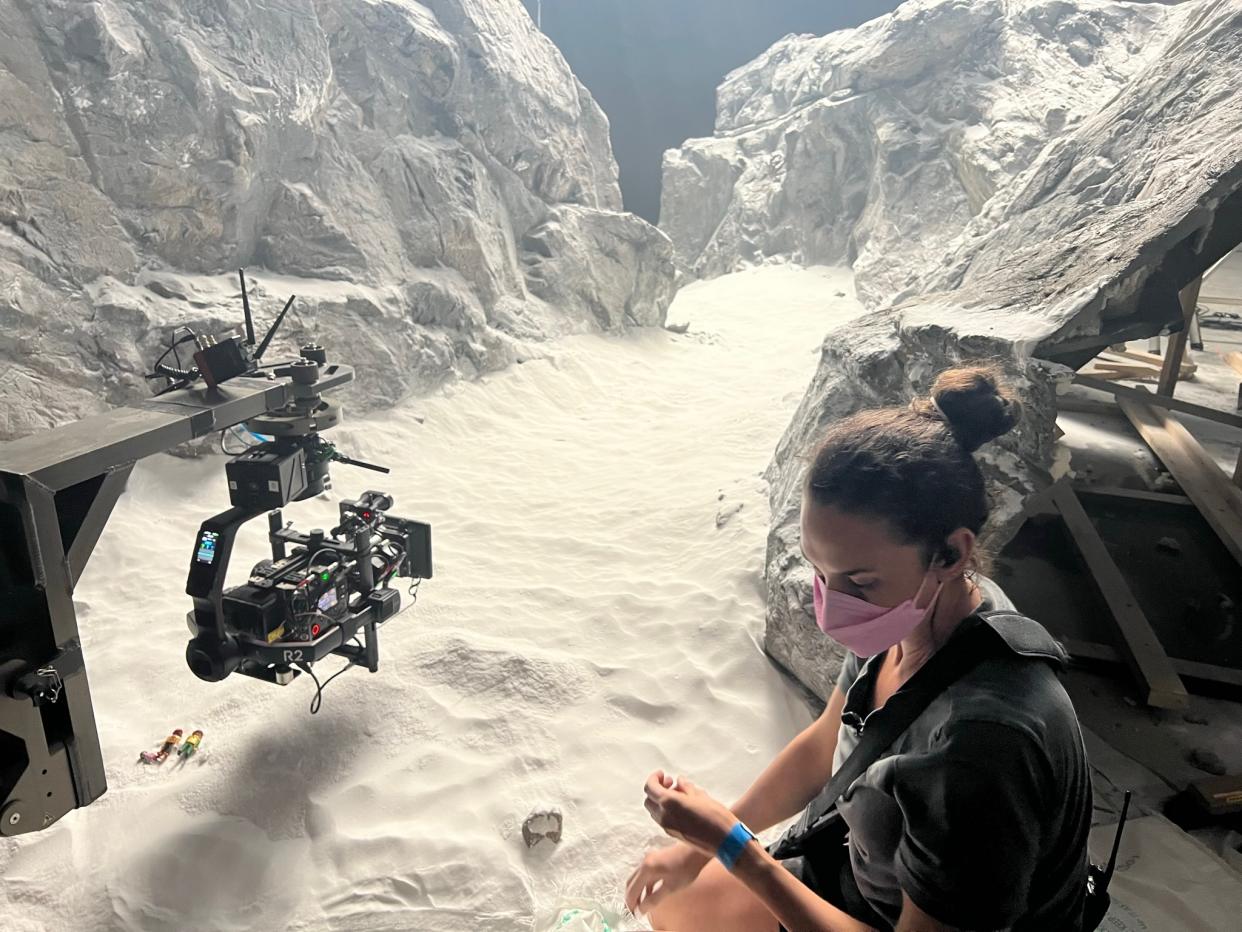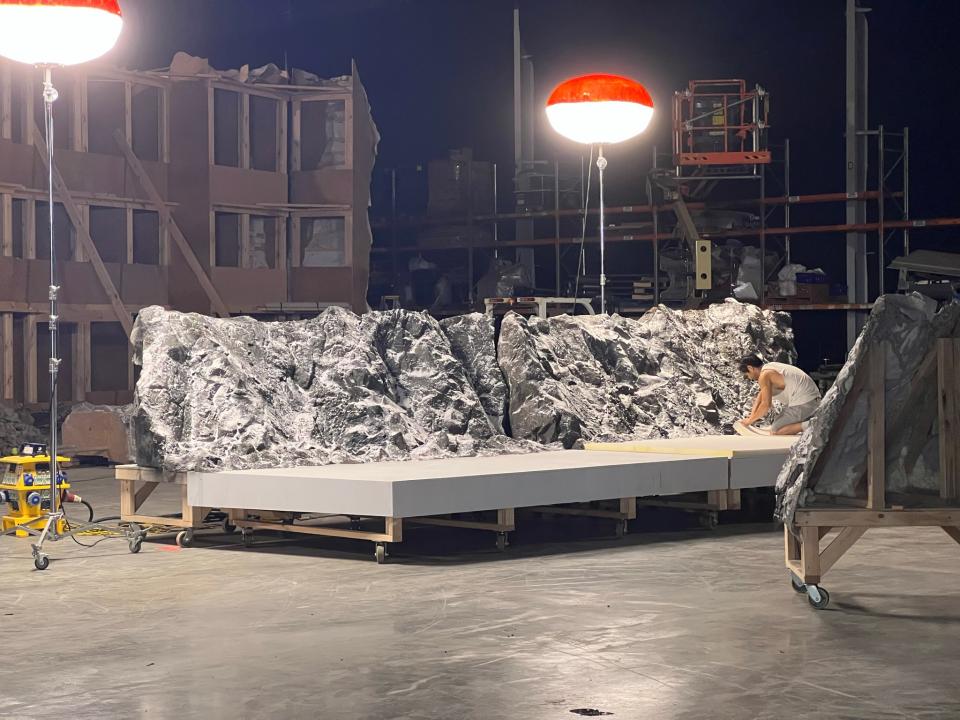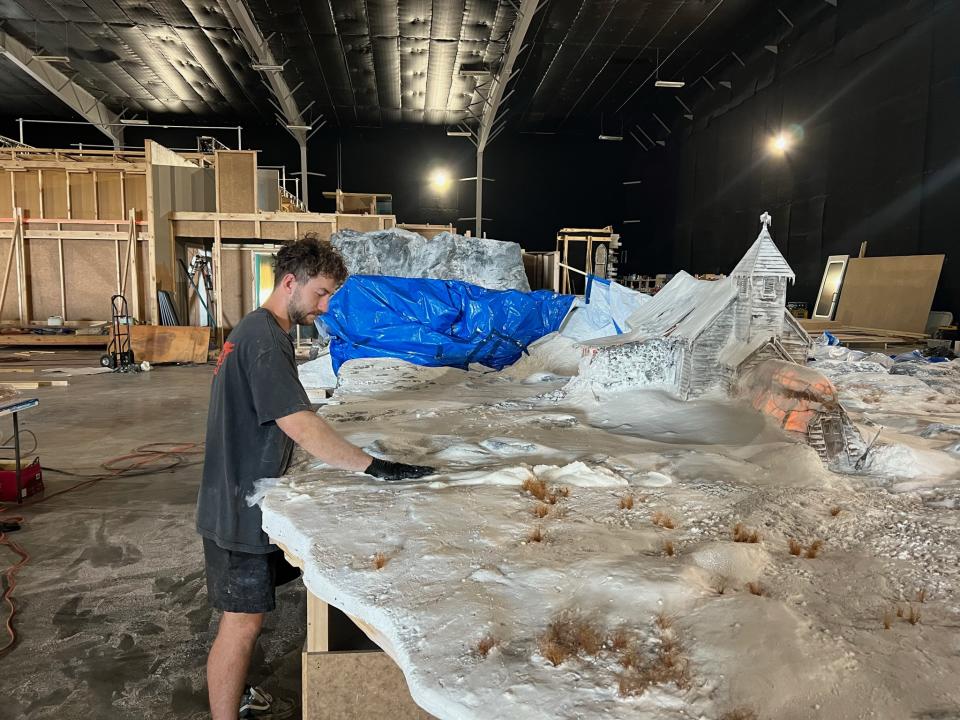‘Sweet Tooth’ Combined Old-School Special Effects and Cutting-Edge Tech to Do Action Its Own Way

To use VFX or not use VFX: that is the question, and one that each TV show has to answer differently. “Sweet Tooth,” the Netflix series set in a world where a virus has wiped out much of humanity and, maybe or maybe not coincidentally, human-animal hybrids are now born, has a tactile, cobbled-together ethos in its design choices. The show’s look doesn’t just illustrate the haphazard nature of scavenging for survival but also is in itself a kind of argument for everything that makes its young human-deer hybrid Gus (Christian Convery) a hero. Building too much of that world in a digital environment would flatten it and make it feel too slick.
Still, in the show’s final season showdown, the story needed to create some big setpieces that were beyond what could be done practically. How “Sweet Tooth” combined new-school and old-school techniques is a fantastic example of how filmmaking tools can come together to create the right look.
More from IndieWire
It’s not that practical shots are always better than VFX shots, of course. It’s that VFX supervisor Matthew Bramante and production designer Nicholas Bassett were focused on working together to solve a couple sticky problems for Season 3. Namely, there’s a very limited snow season in New Zealand, where the series shot, and not a ton of places that look like Alaska, where Gus and friends travel to in search of his scientist mom, Birdie (Amy Seimetz). The race between Gus and his friends and the ruthless Helen Zhang (Rosalind Chao) and her army to find the cave that may hold answers needed to be built on stage.
Gus’s cave, funnily enough, ended up providing “Sweet Tooth” answers with how to shoot one of its most ambitious sequences, a high-octane car (well, snow truck) chase. Bits of the cave set were literally turned on their side in order to cash the check that showrunner Jim Mickle had written in the scripts — repurposing the cave set was how the “Sweet Tooth” team created the “Exterior: Snowy Canyon” through which both our heroes and villains race. It was an answer that Bassett felt they could come to, in part, because of the shared experience the team had working for three seasons together. When Bramante thought they could pull it off with miniatures — basically kit-bashed RC cars — there was a shared confidence to try it.

“Working together for three seasons allowed everyone to kind of trust a process and go, ‘We’ll make it. We won’t panic. We don’t have a solution yet, but we’ll figure it out.’ And then Jim’s ability to go, ‘A miniature just sounds cool. We should do that’ was a great starting point,” Bassett told IndieWire. “But I remember it dawning upon everyone that if we don’t do this, the whole end of the show is going to be a CGI car driving around in a fake environment and that doesn’t appeal to anyone.”
“Sweet Tooth” toyed with using miniatures in prior seasons, but something about the snowy setting helped make them the right solution in this final leg of the journey. “When you’re flying over glaciers, it’s really a matter of scale,” Mickle told IndieWire. “You could be flying over a crust of pizza if you don’t have something to tell you that this is actually 12 football fields wide. It’s all about scale.”
“Sweet Tooth” shot on four stages, and they were able to build the miniature environments on the stage just over from where the full-size vehicle interiors were being shot. “There was this ability to be very cohesive because literally next door to each other, different parts of the final episode were being shot. I think that made such a big difference,” Bassett said.

Several key adjustments with the show’s LED walls also made a real difference to all of the Alaska sequences. Bassett and his production team gave shape to a stretch of snowy ground and then burned the edges up so that the LEDs could sit behind the set and there would be a smooth transition.
“It was great because I think one of the things that’s tricky, when you’re shooting with actors, you [can] show them previs of that whole sequence and be like, ‘That’s what we’re going to do,’ but it’s so hard to understand which piece of that you’re doing,” Mickle said. “So our second unit director or producing director was shooting those slow-mo shots of the exterior of the truck and we can take that and literally show the actors what was going on.”
That kind of clarity and communication, in a very “Sweet Tooth” way, led to a lot more fun and creativity being had, too. “There was no one who was a miniatures expert on our team. Everyone had done a bit or read a bit, but no one was brought in as an expert. So it was very much just utilizing our clever prop makers and cinematographers and technicians who could just figure it out. That’s fun that you can still do that,” Bassett said.
“There was a version of that that I think, if this was a classic, big-budget movie, it would have just been way-over expensive but also impersonal, in a way. So I really loved the handcraftedness of it,” Mickle said. “Everybody had to play off of each other and adapt what their department did, but in a way that really felt like a team effort. Like, ‘We know what we’re trying to do. Let’s pull this off.’”
Best of IndieWire
The Best Father and Son Films: 'The Tree of Life,' 'The Lion King,' 'Nowhere Special,' and More
The 51 Best Sexy Movies of the 21st Century, from 'Spring Breakers' to 'X'
The 14 Best Thrillers Streaming on Netflix in June, from 'Fair Play' to 'Emily the Criminal'
Sign up for Indiewire's Newsletter. For the latest news, follow us on Facebook, Twitter, and Instagram.


